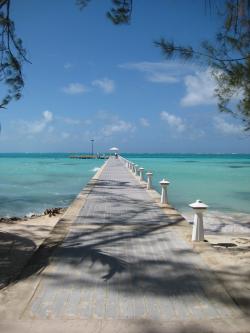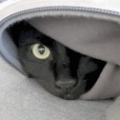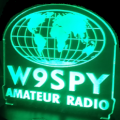jks
About
- Username
- jks
- Joined
- Visits
- 29,850
- Last Active
- Roles
- Member, Administrator, Moderator
- Points
- 203
Reactions
-
v1.403: colormap improvements, multiple DRM schedule databases
The new DRM schedule database from drmrx.org is preliminary. Chris and I working on reorganizing the entries.
DRM tip: while listening to R. Kuwait 15110 I got left-ear-only audio (while using headphones). You can duplicate the left channel audio on the right via the pan control on the audio tab (e.g. set it to "50 R").
The new "SdrDx" colormap from the project by the same name is worth trying.
The new aperture auto mode is now the default and will hopefully lead to better looking waterfalls in people's Twitter posts and YouTube videos.
The "colormap designer" is more of a toy for now. It needs more features to be really useful. Screenshot at the end of this post.
From the CHANGE_LOG file:v1.403 September 17, 2020 DRM extension: Added schedule database selection menu. Includes database from drmrx.org Waterfall/spectrum/colormap improvements: New terminology, colormap "aperture" (what the WF max/min controls really define). A colormap spectrum bar now appears above the WF sliders. It is similar to the bar that appear on the right of the spectrum display. It changes as you adjust WF max/min in manual aperture mode or automatically in auto aperture mode (see next). Markers appear at the WF max/min points whereas the bar itself covers a fixed -140 to -25 dBm. Added aperture auto mode to existing manual and one-shot (auto-scale button) modes. On the main control panel WF tab there is a new menu "aperture". *** Auto mode is the new default, but the choice is saved across page reloads. This is designed to help always keep the waterfall dynamic range optimal for folks who never get around to learning how to use the WF max/min sliders or even the "auto-scale" button. In auto mode the WF max/min sliders become WF ceil(ceiling)/floor. This is the amount of "headroom" to create above and below the automatically calculated WF max/min values. Added colormap control extension consisting of two parts: 1) Aperture auto mode controls. The averaging algorithm/parameter choices are the same as for the waterfall and spectrum averaging (on the WF tab of main control panel). When in auto mode the calculated max/min values are shown, those that are computed plus the selected floor/ceiling headroom. In auto mode the "auto scale" button on the main control panel lights up to remind you that auto mode is in effect. When auto mode averaging is turned off the max/min values are only recalculated when the waterfall zoom, pan or center frequency changes. 2) A "colormap designer" for creating custom colormaps. A work-in-progress. The details of this will probably change. Added new colormap from the SdrDx project. Admin interface: Disallow public listing unless at least one password-less channel is available. Warn about creating URL redirect cycles. Display UTC/local time on admin status page. Use string hashing for faster API command decoding. Many other bug fixes. As usual see the Github commit log.
-
v1.403: colormap improvements, multiple DRM schedule databases
The new DRM schedule database from drmrx.org is preliminary. Chris and I working on reorganizing the entries.
DRM tip: while listening to R. Kuwait 15110 I got left-ear-only audio (while using headphones). You can duplicate the left channel audio on the right via the pan control on the audio tab (e.g. set it to "50 R").
The new "SdrDx" colormap from the project by the same name is worth trying.
The new aperture auto mode is now the default and will hopefully lead to better looking waterfalls in people's Twitter posts and YouTube videos.
The "colormap designer" is more of a toy for now. It needs more features to be really useful. Screenshot at the end of this post.
From the CHANGE_LOG file:v1.403 September 17, 2020 DRM extension: Added schedule database selection menu. Includes database from drmrx.org Waterfall/spectrum/colormap improvements: New terminology, colormap "aperture" (what the WF max/min controls really define). A colormap spectrum bar now appears above the WF sliders. It is similar to the bar that appear on the right of the spectrum display. It changes as you adjust WF max/min in manual aperture mode or automatically in auto aperture mode (see next). Markers appear at the WF max/min points whereas the bar itself covers a fixed -140 to -25 dBm. Added aperture auto mode to existing manual and one-shot (auto-scale button) modes. On the main control panel WF tab there is a new menu "aperture". *** Auto mode is the new default, but the choice is saved across page reloads. This is designed to help always keep the waterfall dynamic range optimal for folks who never get around to learning how to use the WF max/min sliders or even the "auto-scale" button. In auto mode the WF max/min sliders become WF ceil(ceiling)/floor. This is the amount of "headroom" to create above and below the automatically calculated WF max/min values. Added colormap control extension consisting of two parts: 1) Aperture auto mode controls. The averaging algorithm/parameter choices are the same as for the waterfall and spectrum averaging (on the WF tab of main control panel). When in auto mode the calculated max/min values are shown, those that are computed plus the selected floor/ceiling headroom. In auto mode the "auto scale" button on the main control panel lights up to remind you that auto mode is in effect. When auto mode averaging is turned off the max/min values are only recalculated when the waterfall zoom, pan or center frequency changes. 2) A "colormap designer" for creating custom colormaps. A work-in-progress. The details of this will probably change. Added new colormap from the SdrDx project. Admin interface: Disallow public listing unless at least one password-less channel is available. Warn about creating URL redirect cycles. Display UTC/local time on admin status page. Use string hashing for faster API command decoding. Many other bug fixes. As usual see the Github commit log.
-
Problems with Xfinity / Comcast
So your Kiwi is not currently configured for the proxy service it seems. But after some checking I found I could connect to it at its current public ip address (on port 8073). On the admin page connect tab you have the menu entry set to "public ip" instead of "reverse proxy". Change it back, restart, and I'll bet you'll be fine. -
US$1 5VDC Power Supply for the Kiwi
Please don't do this. But there is a much better way using that 6.3 VAC transformer. In fact, it's perfect.
Use a modern low-dropout linear regulator chip (LDO) to get exactly 5V. E.g. a modern LTC / Analog Devices LT1085-5 in a friendly 3-pin TO-220 package can handle 3A output. It's $2-3 USD. It will need to attach to a small heatsink. There are complete schematics in the data sheet and on the web.
https://www.analog.com/media/en/technical-documentation/data-sheets/1083ffe.pdf
Just because you have a 6.3VAC transformer doesn't mean you'd get 6.3 VDC. If you use a full-bridge rectifier you'd get 6.3*sqrt(2) = 6.3*1.4 = 8.9 VDC. But this is fine for the LDO input which always needs to be higher than the output anyway. Yes, the 8.9 to 5V difference will be burned away as heat by the regulation (and you'll need a good heatsink for the LDO to handle that). You don't need an output inductor with an LDO. Just the recommended input and output capacitors to the chip (see data sheet).
You would essentially be building one of those ~$60 Ebay power supplies we recommend on our webpage. They use the same design. -
v1.391,392,393,394: New noise blanker and filters
From the CHANGE_LOG file:
This filter is on the main control panel, audio tab, "noise > filter" menu. Click the "more" button to the right of the menu to adjust the filter parameters, although the filter works well with the defaults. In some cases you might have to increase the filter gain to match the filter-off level, especially during A/B comparisons. Try it with a weak station on the AM broadcast band or ham band SSB signal.v1.394 May 31, 2020 Noise blankers and filters: Added the spectral noise reduction filter by Frank, DD4WH and Michael, DL2FW, via the Teensy-ConvolutionSDR and UHSDR projects. See: github.com/df8oe/UHSDR/wiki/Noise-reduction This noise filter works really, really well. Especially for voice signals. A good alternative to the LMS filters. Note that the Wild blanker and all the noise filters (wdsp, LMS, spectral) don't currently work with the modes: IQ, SAS and DRM (i.e. the 2-channel IQ modes). This will be fixed at some point.
Note that some noise filters always require their sections be enabled via the "more" panel. Otherwise simply selecting their menu entry does nothing. In particular the wdsp and LMS filters since they have independent denoiser and autonotch sections that are enabled separately (or both simultaneously).






